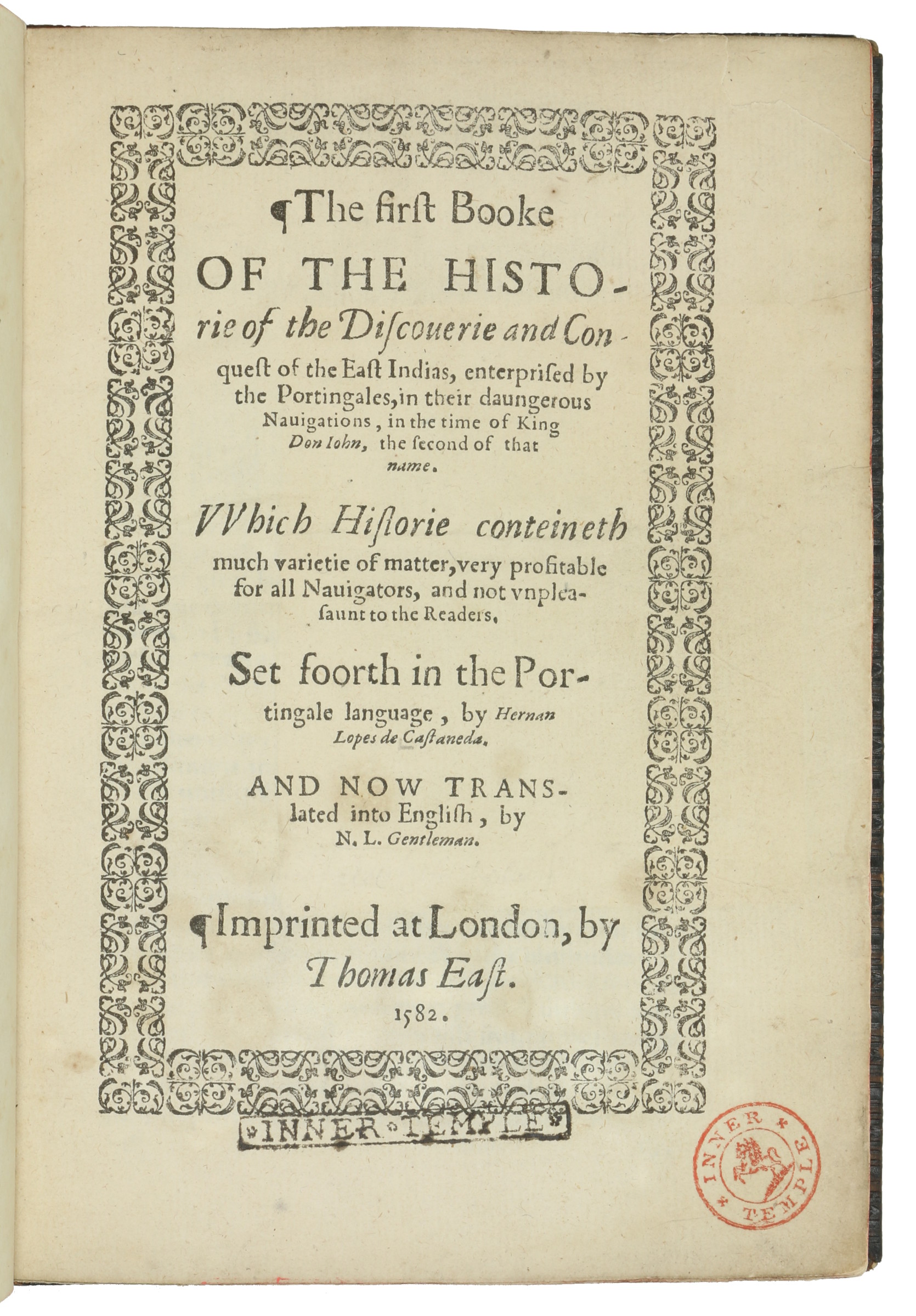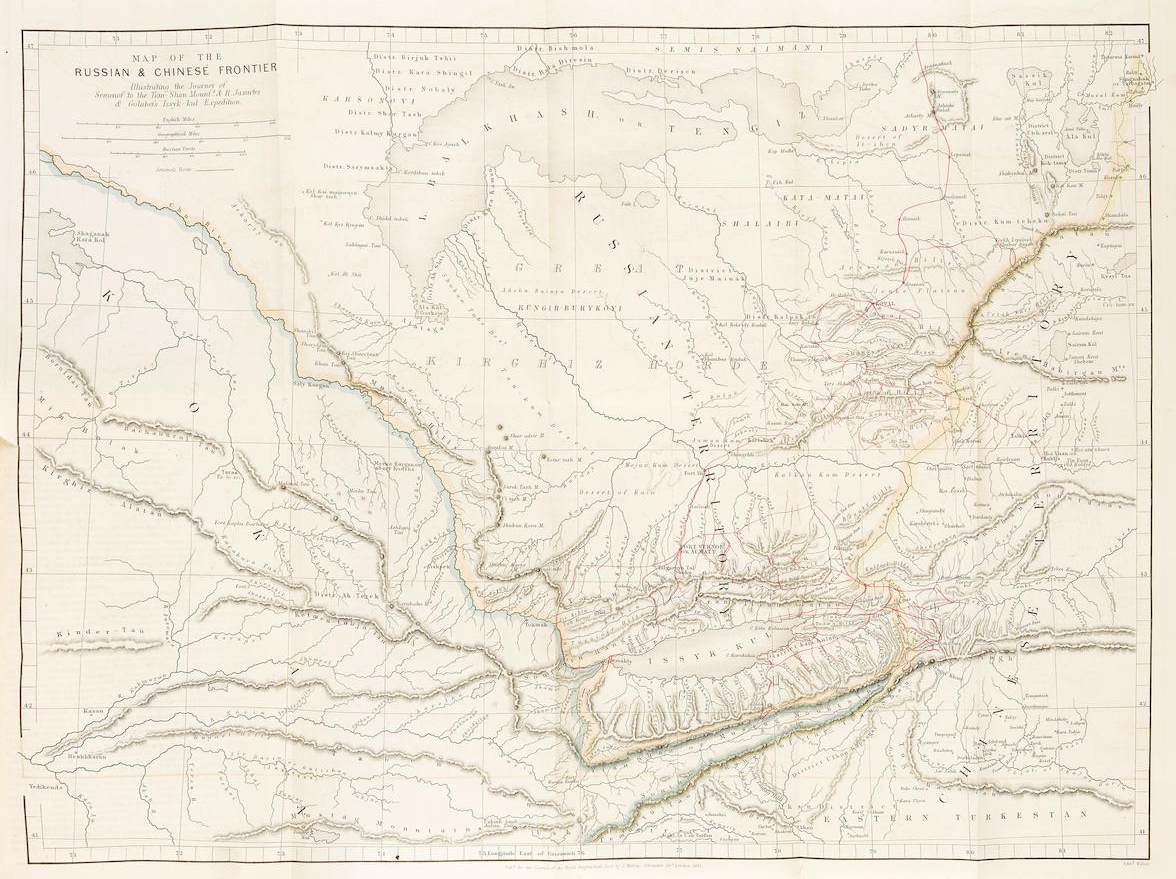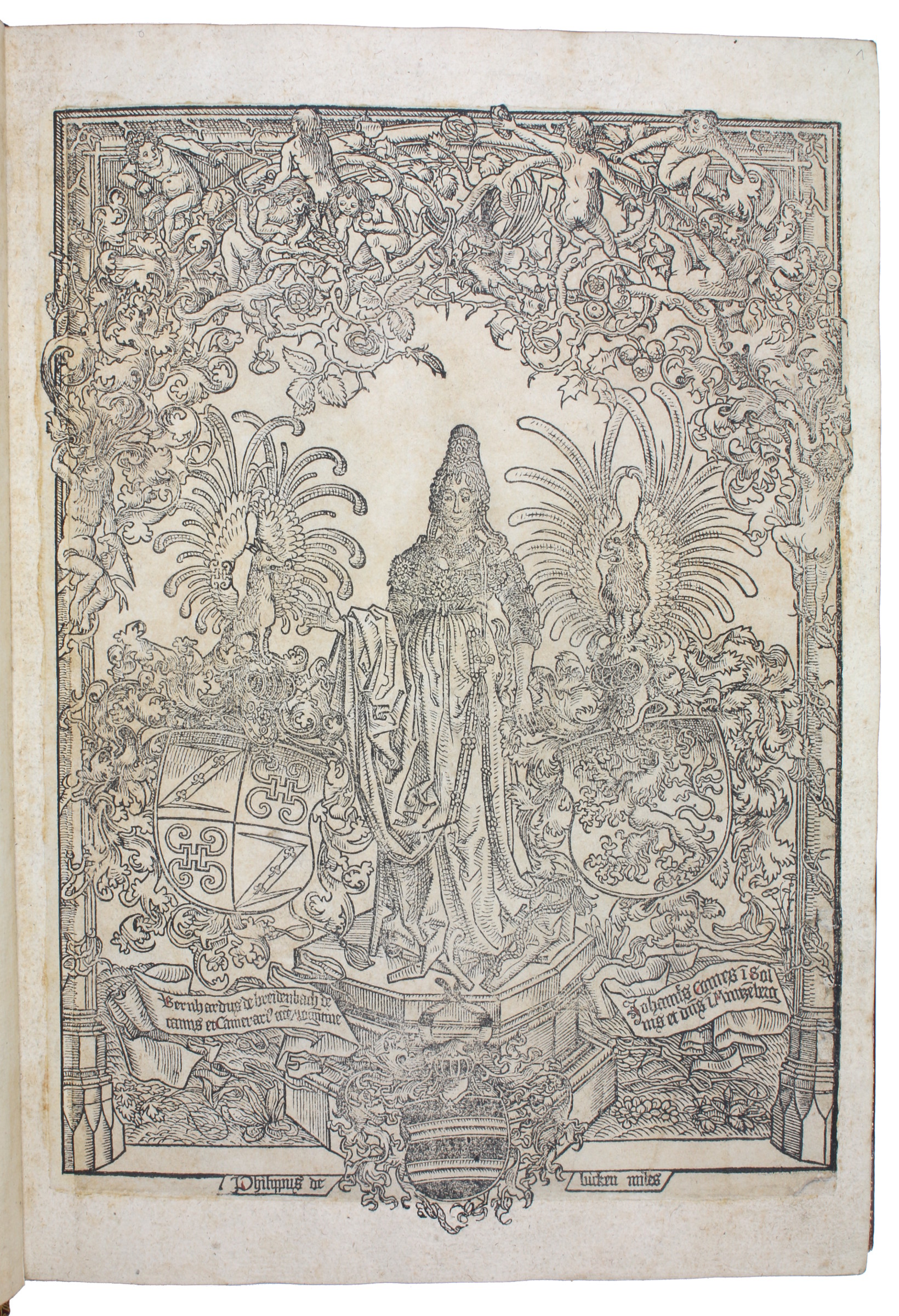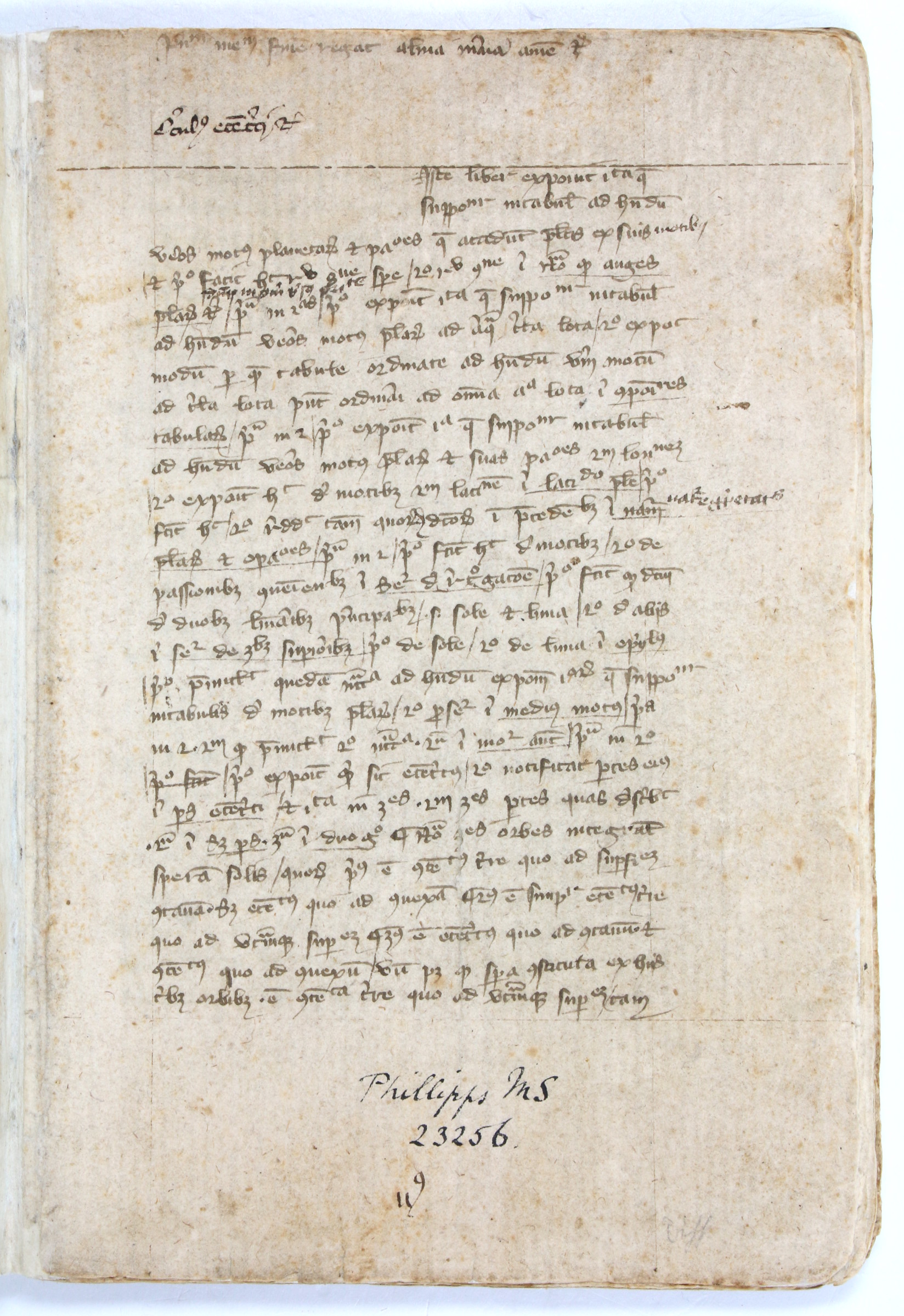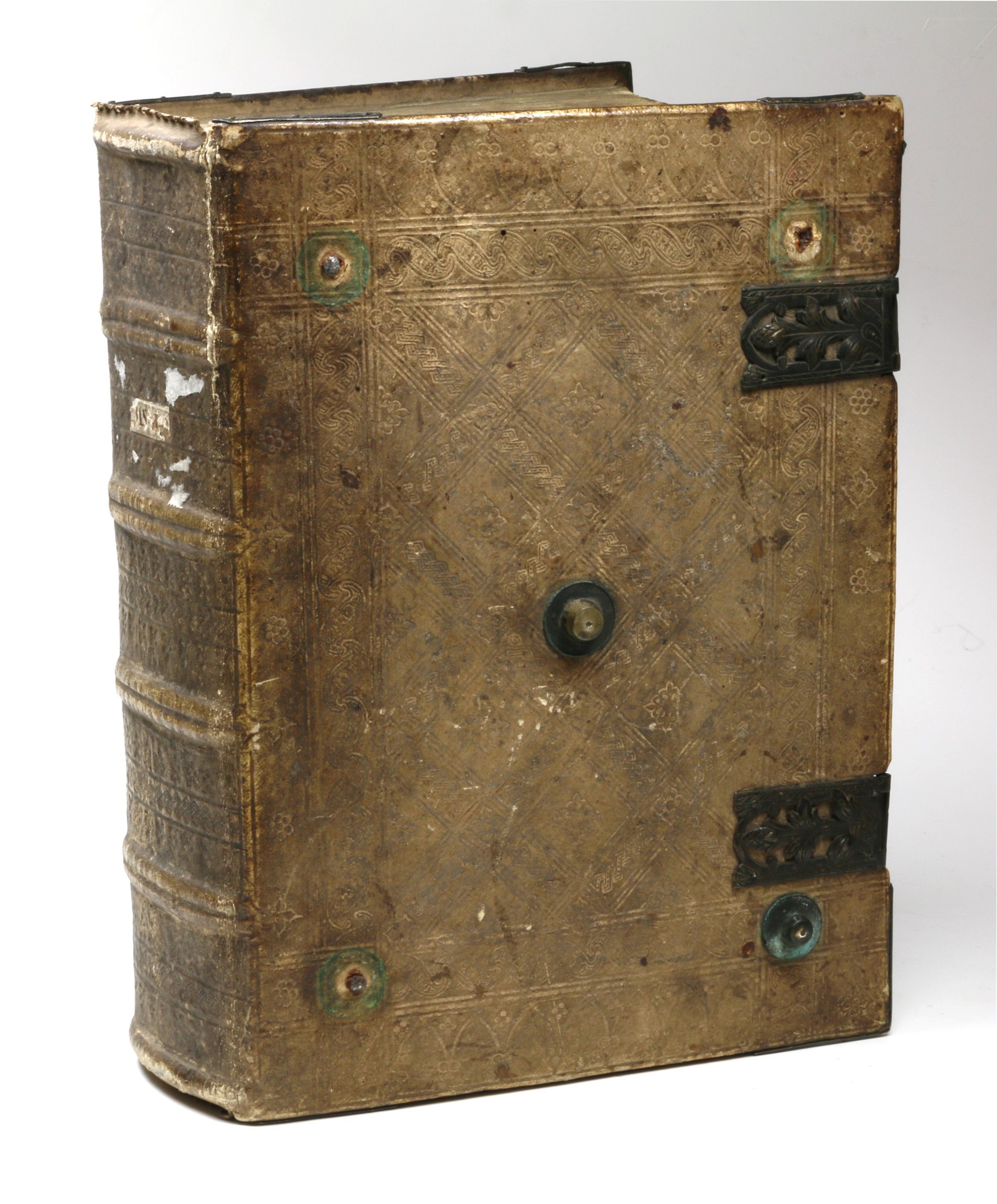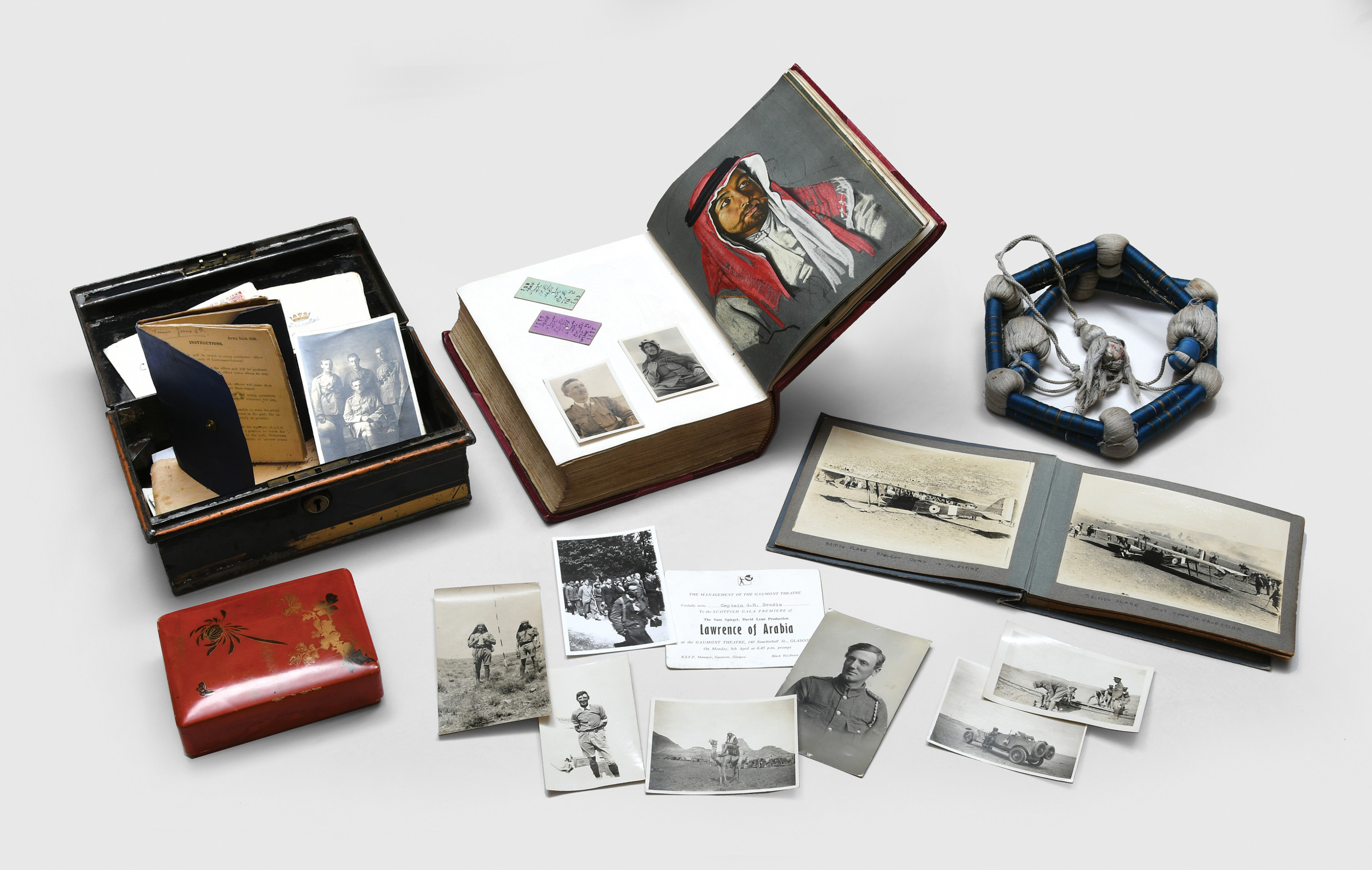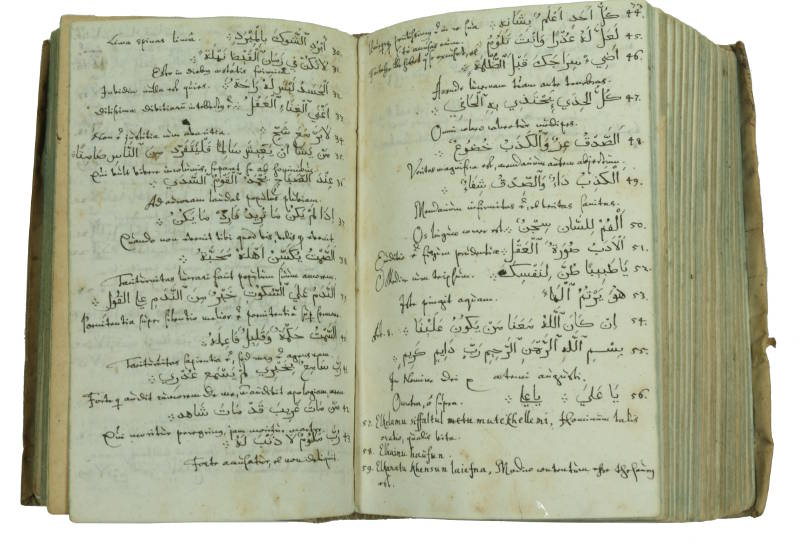
First edition of "the first full-fledged Turkish grammar to be published in Europe" (Smitskamp), "a landmark in Turkish studies" (Navari), one of the most important works produced by the versatile scholar Megiser (1554-1619) from Stuttgart. This copy contains not only the rare additional printed dedication to the Carinthian nobleman Hector von Ernau, but also the extensive handwritten notes of the contemporary Arabist Johann Melchior Mader. In fact, this unique volume constitutes the fullest document extant about an only vaguely known and unresearched triangle of early 17th century enthusiasts of Arabic: Megiser, Ernau, and Mader, only the first of whom achieved fame.
The most obvious asset of the present copy lies in Mader's generous scholarly annotations both in the text as well as on the interleaved pages which expand the book, usually encompassing a mere 167 leaves, to two and a half times its normal size. While the additions in the interleaving are mostly slight, those on the blanks inserted between the individual parts are often quite extensive. Part one (concerned with the Arabic alphabet and spelling, printed by the physician and orientalist Kirsten in Breslau and the only part to contain letterpress Arabic) is followed by 5½ densely handwritten pages of "Sententiae et proverbia Arabica", with 63 numbered sayings (both in Arabic script as well as in transliteration and Latin - and occasionally German - translation). Part two discusses grammar proper; part three contains specimen Turkish versions of the Lord's Prayer, the Apostles' Creed, the Decalogue, and Psalm 51, as well as two centuries of Turkish proverbs transliterated in Roman italics (including Latin, Italian, and German translations). Here, Mader has in several cases provided the Turkish in carefully pointed Ottoman script, and has sometimes corrected the printed text. In the blanks following this section, Mader has added a little over 26 closely written pages of "Proverbia et Sententiae Turcica" (he stops numbering them at 179, with a good ten pages to go). The fourth and final part offers a Latin-Turkish as well as a Turkish-Latin dictionary; this latter section in particular is replete with Mader's handwritten additions, which expand on the printed word list by a generous third. At the end are another three pages of handwritten "Proverbia et Sententiae Persicae", underlining Mader's specific interest in paroemiography - a focus shared by many scholars of the time, including Erpenius. The study of proverbs was thought to offer a window into the culture and mentality behind a language, and the literally hundreds of additional examples here given by Mader not only significantly extend the known corpus of oriental adages, but with their transliterations also tell us more about the pronunciation of early 17th century Turkish.
The other merit of this volume lies in Mader's notes about the editorial genesis and authorship of Megiser's work. At the end of the extra dedication to Ernau (two printed leaves in which Megiser calls Ernau "autor", inserted between A1 and A2 and not present in any other known copy), Mader asserts that Ernau is indeed the real author of this Introduction to Turkish. Megiser, writes Mader, inserted the extra dedication only in the presentation copies he sent to Ernau but deliberately omitted them from the general press run, so as that he himself might appear the author: "The lord of Ernau wrote and disposed the work during his stay at Constantinople, and Megiser published it as its author, though it was not so". In reinforcement of this statement, Mader has stricken out the word "Authore" referring to Megiser on the title page and corrected this to "Descriptore".
Mader's handwritten ownership of this volume ("Joannes Melchior Maderus e Quabilinis", with an Arabic inscription and quotes from Ovid) is on the front pastedown, dated 1620. Remarkably, Mader made a similar claim in print at almost the same time. In 1621 he published at Nuremberg, under a false imprint, an obscure 64-page book on horses and riding ("Equestria sive de arte equitandi") best remembered for providing a definition of a horse that would have satisfied Mr. Gradgrind: "A horse is a non-rational animal that whinnies" (E2r). More than half of this vanity production is taken up with dedications to Mader's noble Carinthian friends, and in this introduction he mentions not only Hector von Ernau and his labour undertaken while at the Ottoman court, but also how Megiser (somewhat unfairly called "ignorant of the Turkish language") appropriated his work and published it eight years previously. Strikingly, he goes on to discuss the very annotated copy here under consideration: "but we shall revise that book, and put it forth with other Turkish, Persian, and Arabic daintinesses, as well as with brief corrections" (D2v).
Unfortunately, this planned revision, the draft of which has here survived, did not materialize. Far too little is known about Mader: ironically, although in the "Equestria" he signs his name as a "doctor of philosophy", that pamphlet cast him as a veterinarian in bibliographic history, and as such he is cited by Jöcher and Schrader (where it is also stated in error that he hailed "from Carniola"). In fact, Mader even then had two Arabist publications to his name: in 1617 he produced not only a ten-page "Grammatica Arabica", but also a long "Oratio pro lingua Arabica" (both printed by David Franck in Augsburg). While the former includes among the dedicatees Johann Ulrich von Ernau (curiously disguised as "Ioan. Ulricus Österreicherus"), the latter contains a long list enumerating the "illustres & clarissimi eruditione viri" to whose work in Arabic he is indebted, among them not only "Petrus Kirstenius M.D., amicus meus singularis", but also "Hieronymus Megiserus, polyglottus ille Archiducum Austriae".
Mader was born in Waiblingen near Stuttgart, likely in the early 1590s; he matriculated at Tübingen in 1611, took a Master's degree in 1613 and left the university two years later (cf. Hermelink II, p. 65). His years as a travelling scholar from 1615 to 1620, which took him as far as Prague, Leipzig, Weimar, Leiden, Paris, Louvain, Basel, Strasbourg, Augsburg, Linz, Vienna, Seisenberg in Carniola, and Padua, can be traced in his friendship album (Frommann collection, Württembergische Landesbibliothek Stuttgart, StB-Nr. 138), which includes entries by Andreas Osiander the Younger, Thomas Erpenius, Gabriel Sionita, Johannes Hesronita, and Johann Buxtorf, as well as by many dedicatees of his works. His numerous friendships among Carinthian and Carniolan noblemen can best be explained by reference to his fellow Württembergian Megiser, who signed the album in Linz on June 14, 1618, while serving as historiographer to the Upper Austrian estates: the scholar sported a theory that the Dukes of Carinthia were descended from the Counts of Waiblingen, Mader's birthplace (cf. his Annales Carinthiae [1612], p. 12, likewise mainly the work of a different, uncredited writer), and so it was probably Megiser (whom Mader would soon come to view so critically) who first suggested that Carinthia was the place whence a full-blooded Swabian ought to turn. Mader's later fate is uncertain, but it is likely he died soon after producing the "Equestria", in the early years of the Thirty Years' War that claimed so many lives by famine and disease.
Hector von Ernau, born the son of the Carinthian mint-master in 1562, went on to serve his native country in high offices; he died in Basel in 1649 without having achieved notoriety as a linguist. His sojourn in Constantinople, likely as the member of an embassy, and the extent of his studies in oriental languages, so highly praised by Mader, must remain the subject of further investigation.
Provenance: 1) Mader; 2) 18th century ownership "L. V. Pantaleon" on title-page; 3) ownership of Francis Watts, Geneva 1823, on flyleaf; 4) Sefik E. Atabey (his bookplate on the pastedown). In fine condition throughout.
